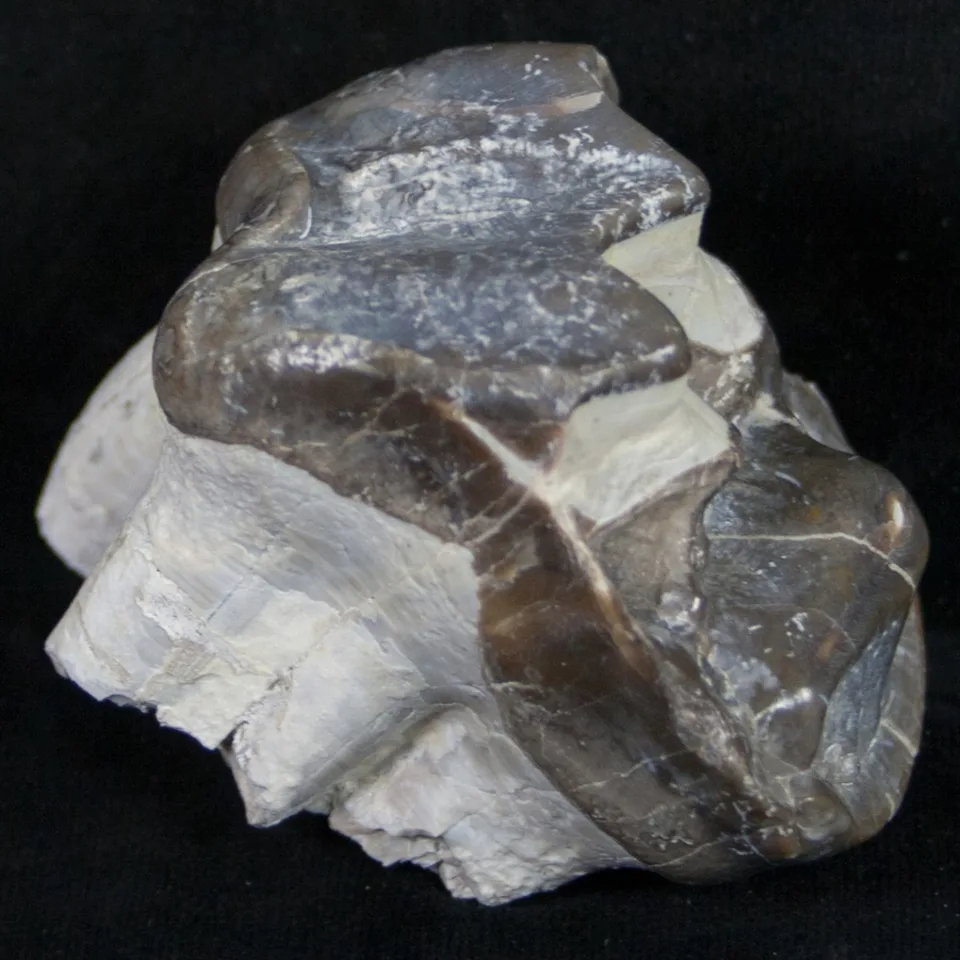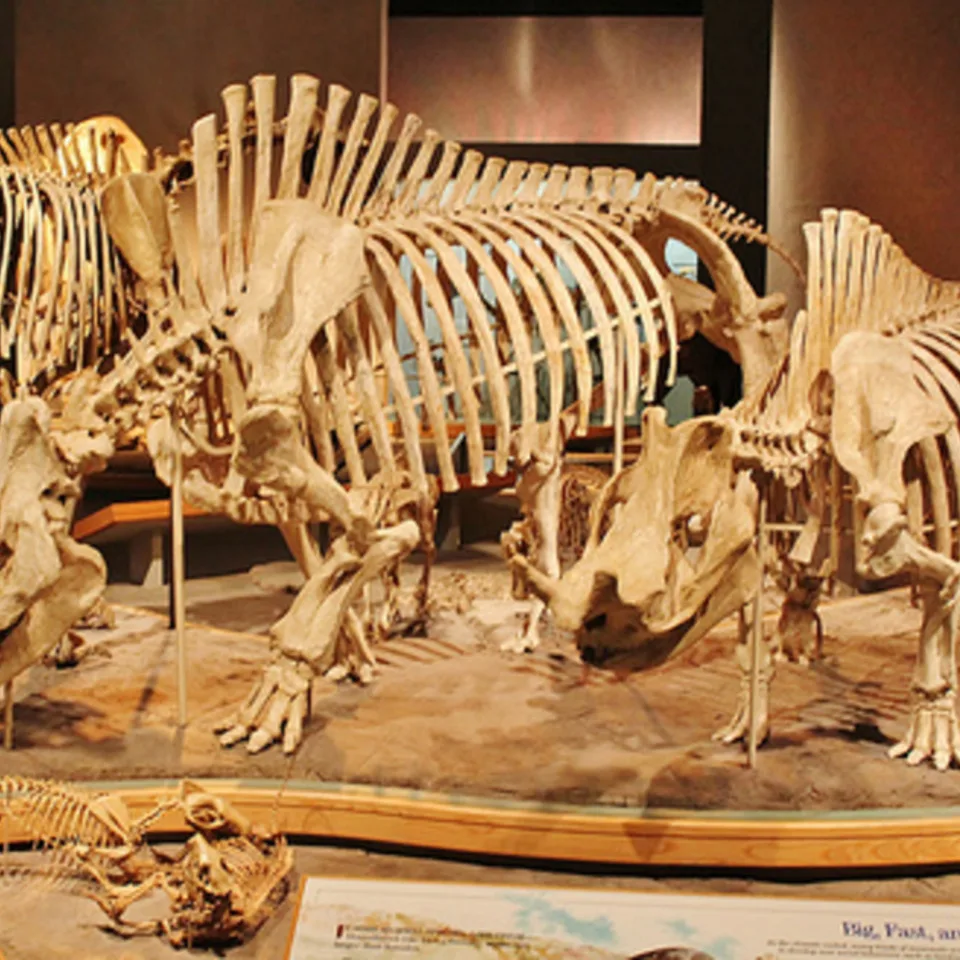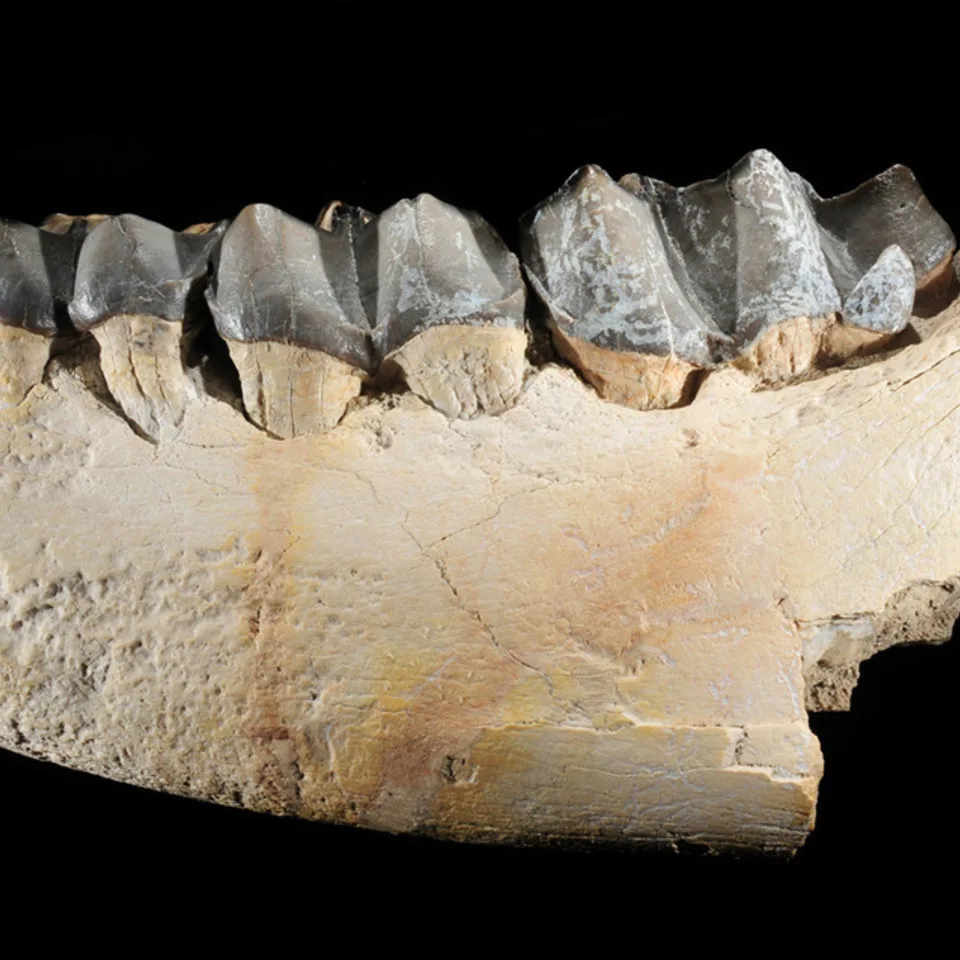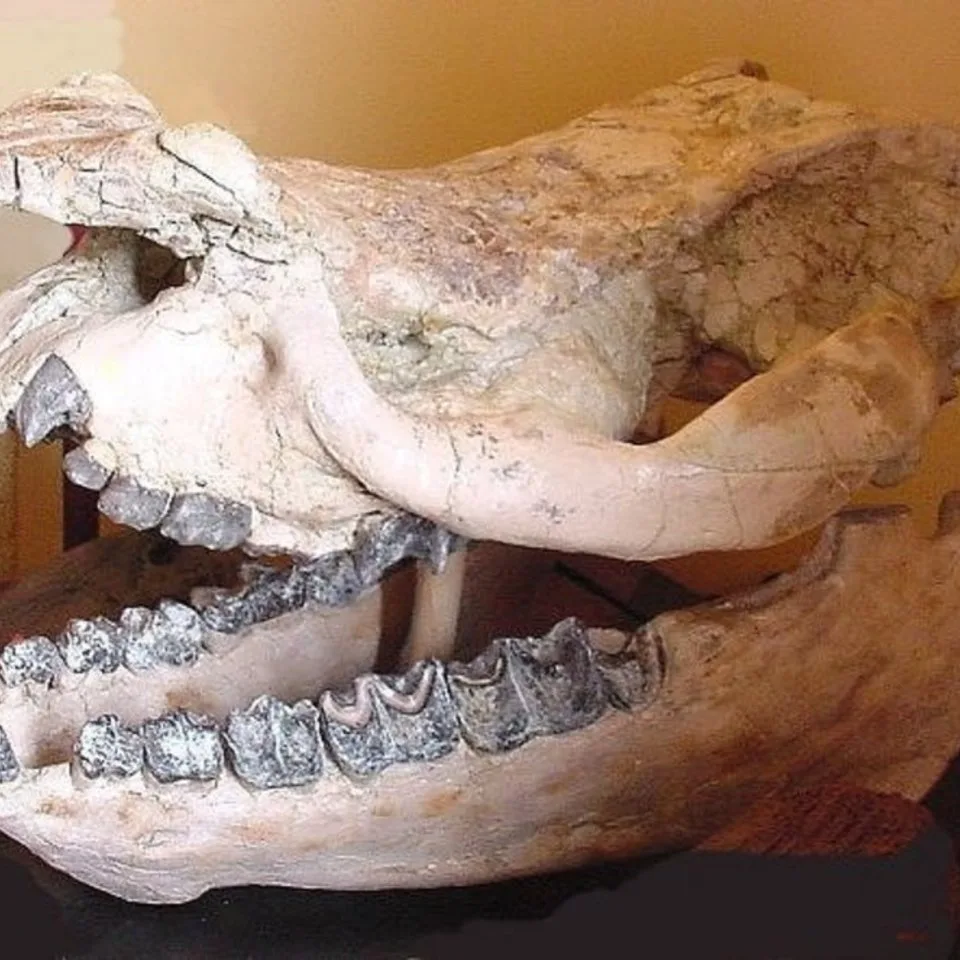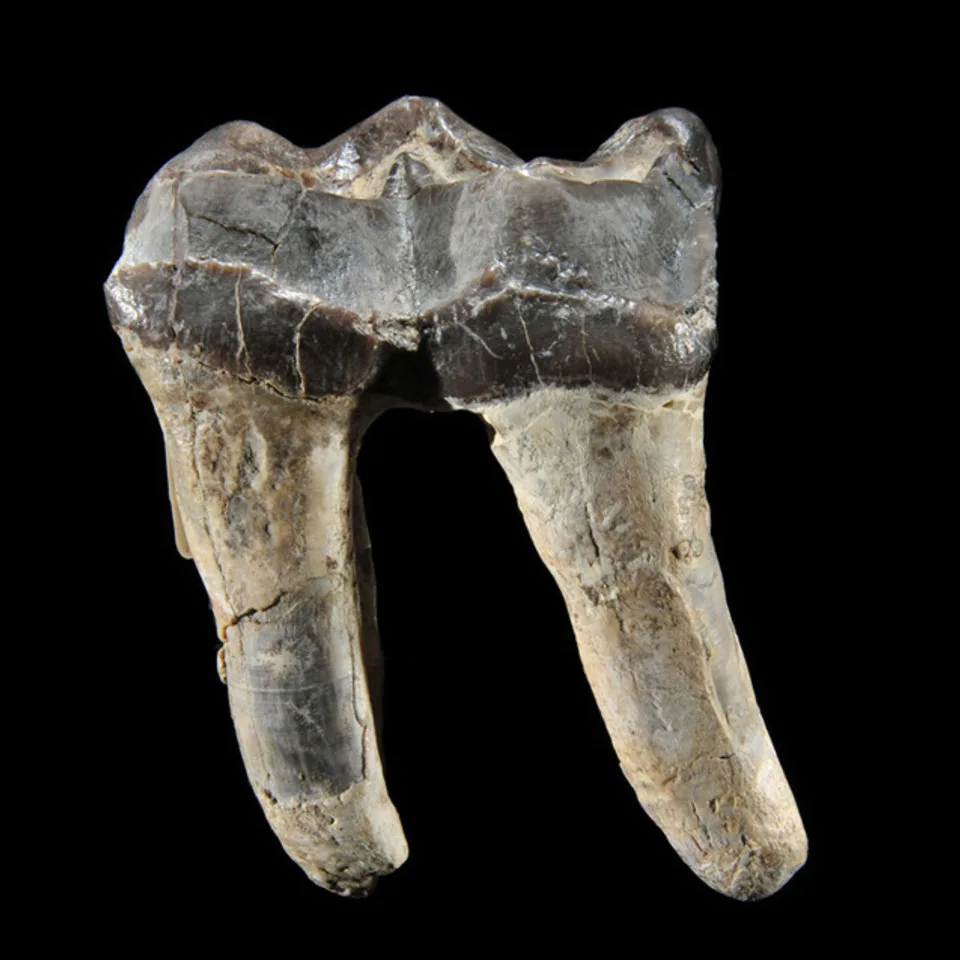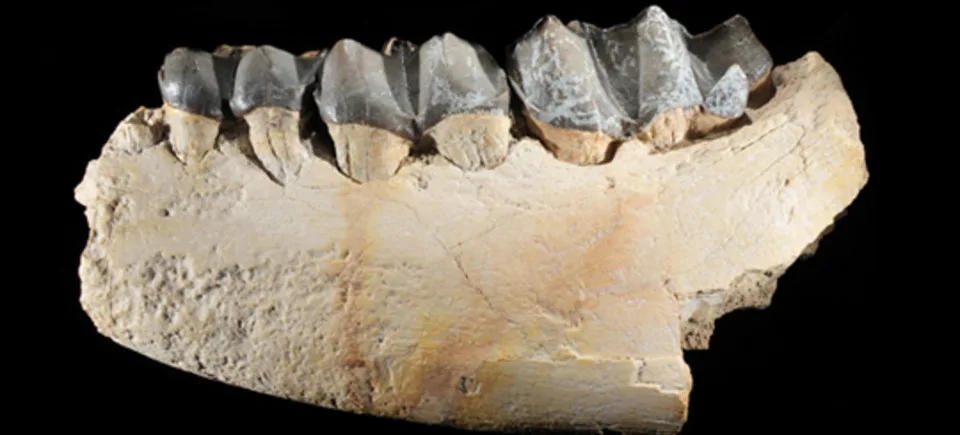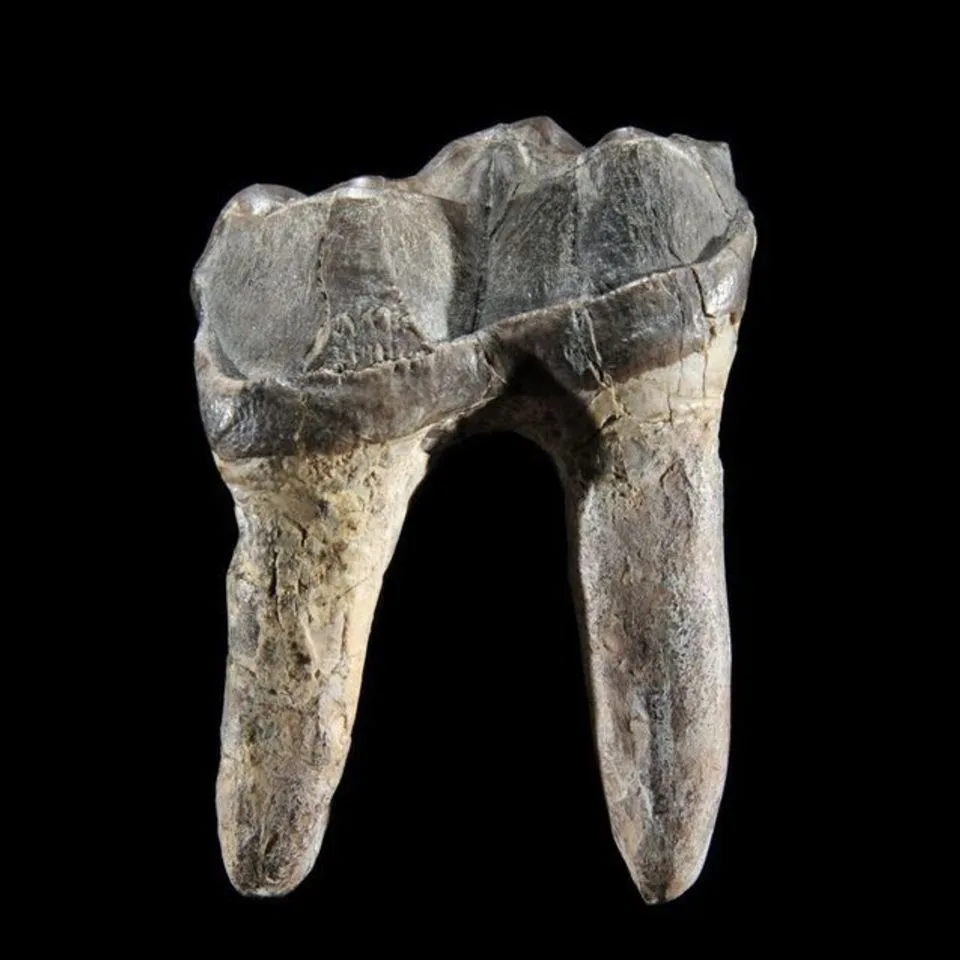Brontothere (Titanothere)
The Brontotheres or Titanotheres, are a completely extinct group of perissodactyls that had elongated skulls with shortened faces and a unique pattern of w-shaped ridges on their upper molar teeth. The anatomy of their feet and teeth shows that Brontotheres were perissodactyls, but we do not understand exactly how they are related to the other perissodactyl groups.
This is why they are placed in an unresolved position at the very bottom of the perissodactyl cladogram, to demonstrate that we do not know where they belong within the evolutionary tree of the group.
The earliest brontothere, Eotitanops, was small and hornless and not much different from other early perissodactyls, but more specialized species of brontotheres quickly evolved. Dolichorhinus from the middle Eocene of Utah had a peculiar elongated skull. Other brontotheres evolved very large body sizes exceeding that of living rhinos and large bony appendages on their skulls.
The most extreme example of this horn formation in a North American brontothere is found in Megacerops. Megacerops had a pair of long bony appendages, forming a “slingshot” configuration above its nose. The appendages are larger in males. The neck musculature was very strong, which suggests that male brontotheres may have used these appendages for headbutts or to topple one another with upward head thrusts.
Female brontotheres had smaller appendages on their skulls, which may have been used as weapons to protect vulnerable calves from predators. In Asia, a very different kind of brontothere, known as Embolotherium, evolved a similarly gigantic body size. Embolotherium had a single elongate battering ram-like bony process composed of its nasal and frontal bones.
Reconstruction of Embolotherium based on the markings on the skull indicate that Embolotherium has a huge nasal cavity, which may have been used for making loud vocalizations for communicating with other members of the same species over long distances.
Despite their size and success, all brontotheres died out at the end of the Eocene in both North America and Asia. Their dentitions suggest a diet restricted to browsing, although we do not know for sure what their diets were.
